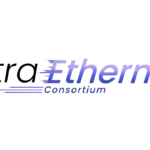Water scarcity in Senegal: Crowdfunded wells bring relief to over 50 villages
http://www.france24.com
Like us on Facebook:
https://www.facebook.com/FRANCE24.English
Follow us on Twitter:
https://twitter.com/France24_en
Like us on Facebook:
https://www.facebook.com/FRANCE24.English
Follow us on Twitter:
https://twitter.com/France24_en
Author: Source Read more
However, in many cases, we want to refer only to published content. The problem arises when we add references during content creation without verifying whether the referenced items are published. This can lead to confusion later when we wonder why the referenced contents are not visible when viewing the content.
Here’s a step-by-step guide on how to use a Drupal view to filter the values appearing in an entity reference field
“We’ve just made an OpenSSH release to fix a remotely exploitable RCE vulnerability in ssh-agent’s PKCS#11 support (CVE-2023-38408). Details at https://openssh.com/releasenotes.html#9.3p2
Thanks to the Qualys Security Advisory Team for finding and reporting this bug.”
This appears to impact every version of OpenSSH’s ssh-agent from 5.5 onwards.
 Read the original post at: Read More
Read the original post at: Read More
The post Leading Cloud Service, Semiconductor, and System Providers Unite to Form Ultra Ethernet Consortium appeared first on Linux.com.